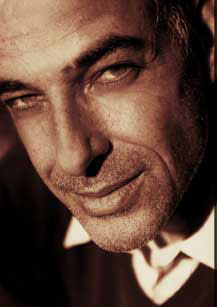Mar Suarez
Publicado en la Azay Art Magazine
Poemas de amor, de ruptura, de unión. Versos cortos, inmediatos, como cada golpe del latido del corazón. Así es “Entre Nosotros”, poemario que la Editorial Niram Art trae para 2012 desde Israel hasta el público castellano en su primera edición bilingüe hebreo-español del poeta israelí Eran Eisen.
Se trata de una poesía sentida, íntima, entre el poeta y su amor, y también entre el poeta y su lector –ese “Nosotros” del título somos él y todos-. Una poesía amorosa, cortada por las contradicciones del alma dentro del mundo moderno y urbano que lo envuelve con su artificialidad y velocidad. En breves escenas cotidianas el poeta rasga los velos de las idas y venidas del amor, de la importancia del contacto humano en la frialdad de la ciudad, la necesidad del otro para sentir la vida lejos de una apretada agenda o una rutina vacía y automática. Las palabras obtienen su arrolladora fuerza en la precisión con la que Eran Eisen las elige y las une, y en la suavidad con que las deja fluir ante nosotros. El poema no tarda en leerse, como reflejo de la rapidez con que se mueve el hombre de hoy, pero la emoción se prolonga más allá de la lectura, provocando el deseo de la duración frente a lo instantáneo. Se desdeña lo artificial y se persiguen el contacto, el roce y la caricia eternos, en definitiva, el amor en la vida cotidiana.
Los poemas de “Entre Nosotros” en la edición de Niram Art están flanqueados por dos magistrales estudios de los escritores y profesores de Literatura Héctor Martínez Sanz y Diego Vadillo López. Elegidos por la Editorial para abrir y cerrar el poemario con sus palabras, ambos escritores aportan una visión académica y literaria que servirán al lector como sugerencias para una mayor profundización y disfrute de los versos de Eisen. «Eran Eisen quiere ser entendido. Lo que prima es comunicarse, porque la lengua, oral o escrita, para Eisen es comunicación con el otro. La valentía es mostrarse, el valor literario es enseñarse. Eran Eisen está entre nosotros con su palabra», señala Héctor Martínez en el prólogo. Por su parte, Diego Vadillo completa la visión: «los versos son como retales de corrientes de conciencia, a su vez ubicados por el instante al que aluden. Las secuencias que refieren los versos son constituidas por empalmes de breves trozos de cobre y goma, construyendo el cableado por donde fluirá la corriente poética. Los poemas de Eran Eisen son esquemas de sus sentimientos, tironeados estos por la inmensa contemporaneidad y por el mundo interior».
En esta edición los poemas se acompañan y dialogan con el excelente trabajo de fotografía artística de León Minovsky, inspirado en los versos del poeta israelí. Al igual que los poemas, las fotografías se suceden en destellos detallistas, insinuaciones, de gran poder sugestivo. Con ello, el poemario “Entre Nosotros” alcanza un perfecto e impecable equilibrio entre la imagen y la palabra poética.


